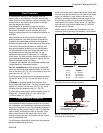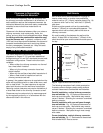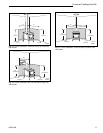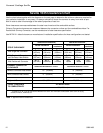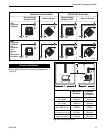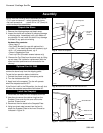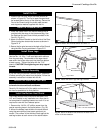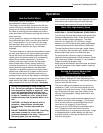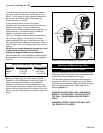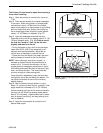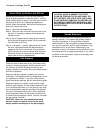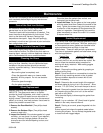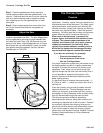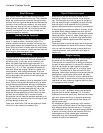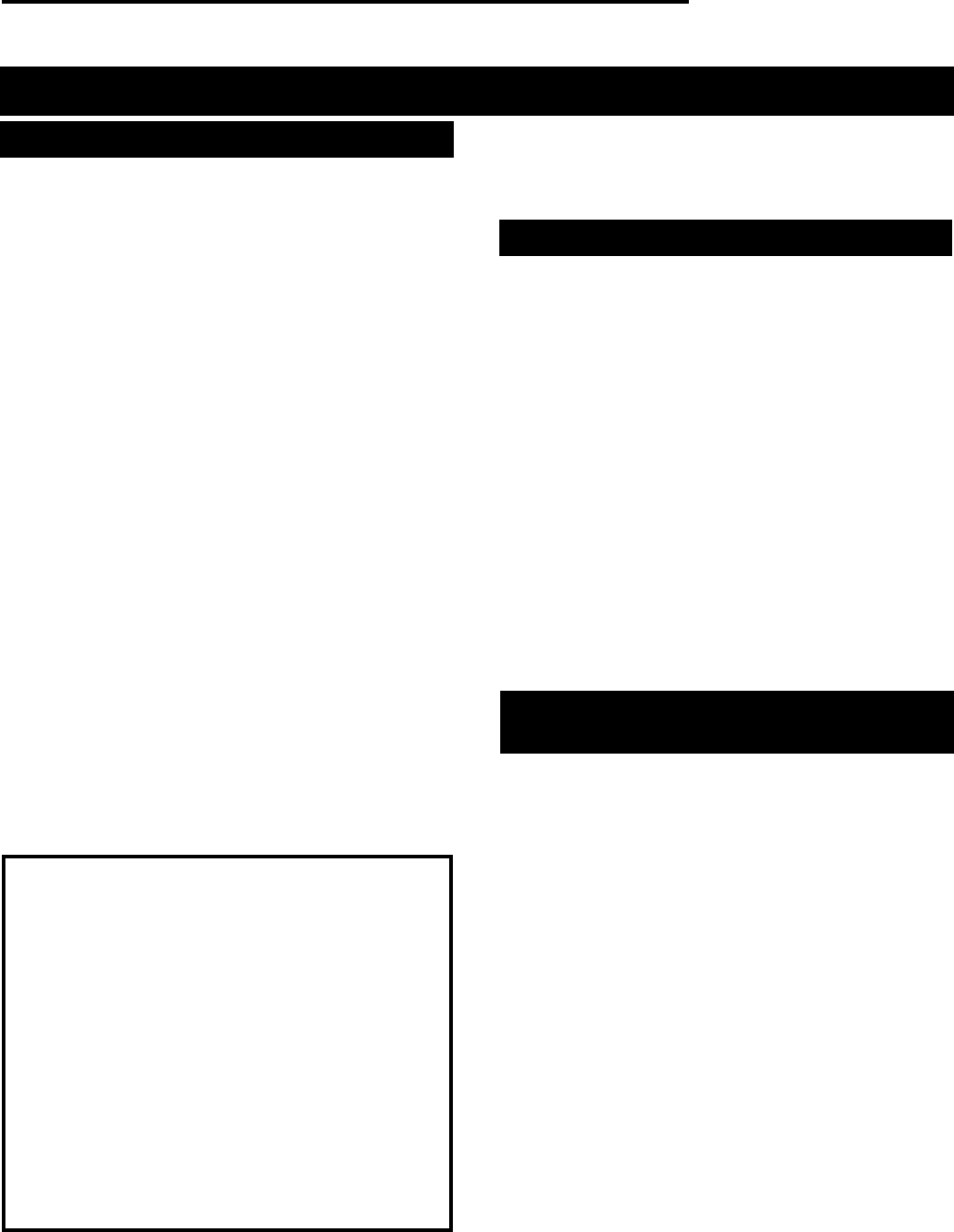
17
Vermont Castings Seville
30001490
Air enters the stove through two, unrestricted inlets
and is heated while passing through separate channels
before being delivered through four stainless steel
multi-ported tubes located at the top of the firebox.
Burn Only High-Quality Wood
THE SEVILLE IS DESIGNED TO BURN NATURAL
WOOD ONLY; DO NOT BURN ANY OTHER FUELS.
You will enjoy the best results when burning wood that
has been adequately air-dried. Avoid burning wood
that has not been properly seasoned. The wood
should be no longer than 18" (457mm) in length,
however, you will find that shorter wood lengths ease
refueling and promote the most efficient combustion.
The best hardwood fuels include oak, maple, beech,
ash, and hickory that has been split, stacked, and air-
dried outside under cover for at least one year.
For areas that do not have a supply of hardwood,
commonly burned softwoods include tamarack, yellow
pine, white pine, Eastern red cedar, fir, and redwood.
These too should be properly dried.
Keep wood a safe distance from the heater and keep it
out of the areas around the heater used for refueling
and ash removal.
Use the Air Control Setting that
Works Best for You
No single air control setting will be appropriate for
every situation. Settings will differ depending on the
quality of the fuel, the amount of heat desired, and how
long you wish the fire to burn.
The control setting also depends on your particular
installation’s “draft,” or the force that moves air from
the stove up through the chimney. Draft is affected by
such things as the length, type, and location of the
chimney, local geography, nearby obstructions, and
other factors.
Too much draft may cause excessive temperatures in
the Seville, and could even damage it. On the other
hand, too little draft can cause backpuffing into the
room and/or the “plugging” of the chimney.
How do you know if your draft is excessively high or
low? Symptoms of too much draft include an
uncontrollable burn or a glowing-red stove part. A sign
of inadequate draft is smoke leaking into the room
through the stove or chimney connector joints, low
heat, and dirty glass.
Do not use chemicals or fluids to start the
fire. Do not burn garbage or flammable fluids
such as gasoline, naptha, or engine oil. Also,
never use gasoline-type lantern fuel, kero-
sene, charcoal lighter fluid, or similar liquids
to start or "freshen up" a fire. Keep all such
liquids well away from the seville while it is in
use.
CAUTION: the Seville will be hot while in
operation. Keep children, clothing and
furniture away. Contact may cause skin
burns.
DO NOT OVERFIRE THIS HEATER. Overfiring
may cause a house fire, or can result in
permanent damage to the stove. If any part of
the stove glows, you are overfiring.
How the Seville Works
Combustion control is achieved in the Seville through
two separate air delivery systems.
The primary air control lever, located at the left rear
corner of the stove, controls the amount of incoming
primary air for starting, maintaining and reviving the
fire. More air entering the stove makes the fire burn
hotter and faster, while less air prolongs the burn at a
lower heat level.
For the greatest air supply and maximum heat output
(but the shortest burn time), move the lever down to
the 7 o’clock position. For a fire that will last longer
with less heat, move the lever up. You can set the
lever anywhere in between the upper and lower
extremes.
The Seville features an automatic thermostat to ensure
an even heat output at any manual setting you select.
As the fuel burns, the thermostat reacts to the heat
radiating form the stove surface, and, consequently
adjusts the air shutter attached to it. As the fire
intensity (and heat output) builds, the thermostat
slowly closes the air shutter, thereby restricting
incoming combustion air. As the fire intensity then
wanes (and heat output lessens), the thermostat
responds and gradually opens the air shutter which
allows more combustion air to again enliven the fire.
This ebb and flow action functions continuously to
prolong the burn cycle until the fuelbed is exhausted.
Another separate supply of oxygen is delivered to the
upper area of the firebox to support combustion of
gases released from the main fuel bed. Secondary
Operation



